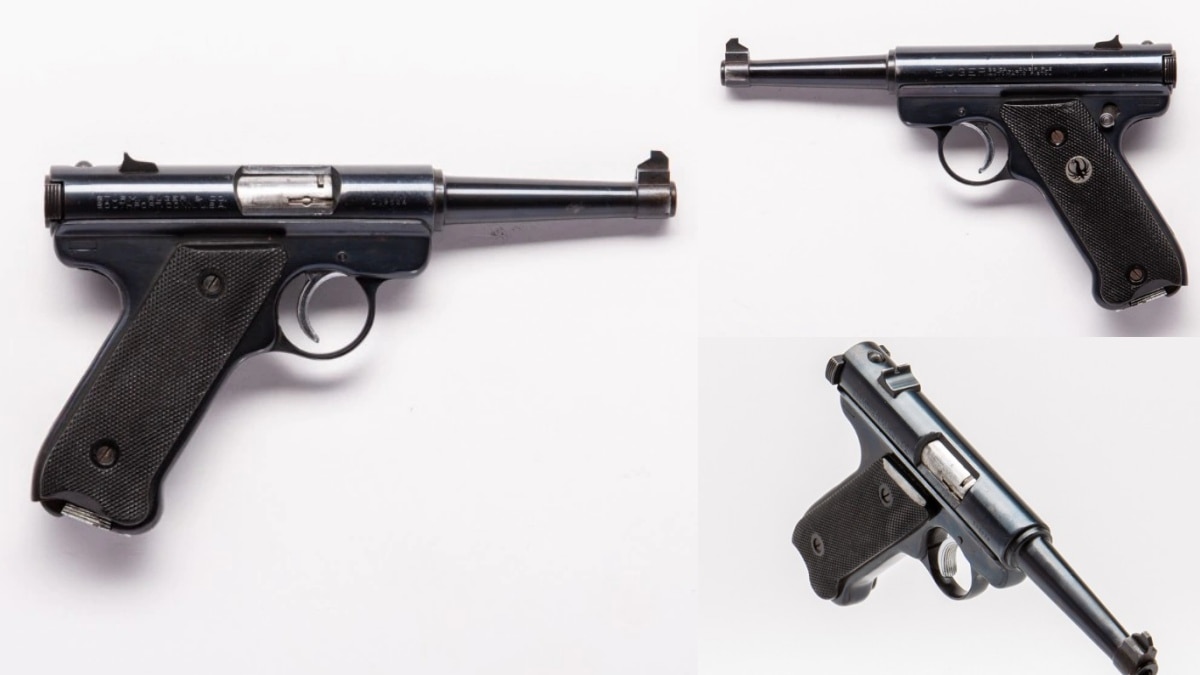Arguably the most successful of Japanese firearm wonk Kijirō Nambu’s pistols, the Type 14 saw lots of use in World War II and is seriously collectible today. Nambu is associated with at least a half-dozen different machine guns, the Arisaka rifle series, a submachine gun and four pistols that reached service.
Nambu, a general in the Imperial Army who died just a year shy of becoming at octogenarian in 1924, is often described as the “John Browning of Japan” due to his prolific gun designs. The Type 14, itself a simplified update to Nambu’s own Type A pistol, was designed in the general’s last days and was first produced by the Chigusa Arsenal for service with the Imperial Army in 1926.
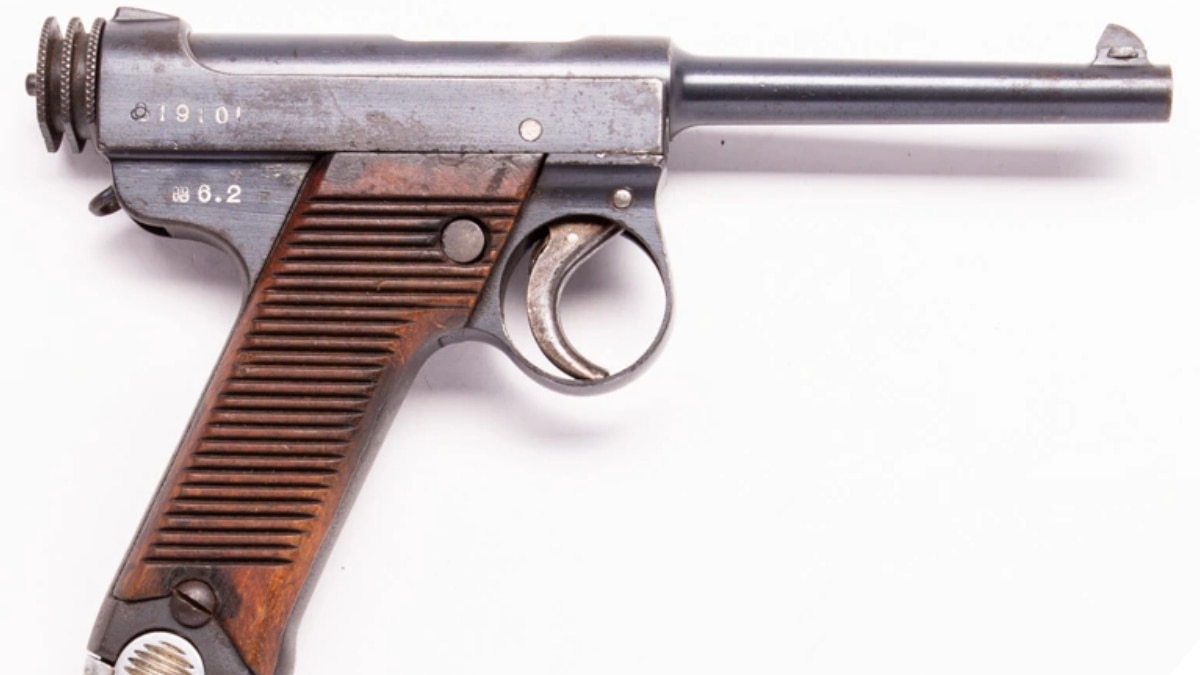
The Nambu was a simple striker-fired semi-auto with a fixed barrel and single-stack magazine (Photo: Richard Taylor/Guns.com)
Striker fired with a very light trigger pull, the Nambu Type 14 resembled the German Luger but used an entirely different action with a cocking handle at the rear of the pistol. Chambered in 8x22mm Nambu, a round that is on the pipsqueak end of ballistic performance when stacked against 9mm Luger, the Type 14 carried eight rounds in a single stack magazine. Its name comes from the fact that it was adopted in the 14th year of the reign of Emperor Taishō.
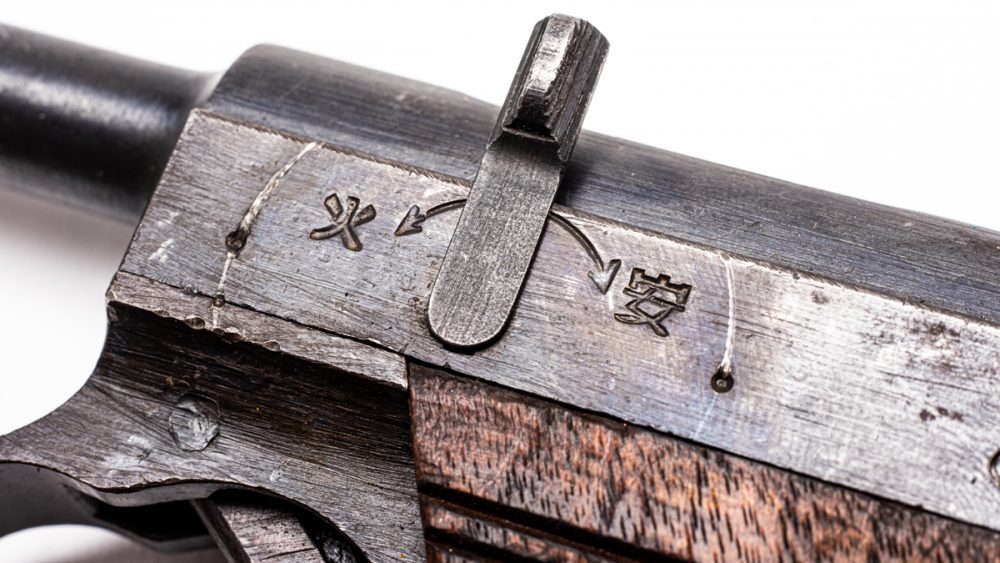
A neat thing about Nambu T14s is that the safety lever on the left side uses the literal Japanese kanji 火 for “fire/flame.” (Photo: Richard Taylor/Guns.com)
While NCOs were issued a sidearm, officers had to buy their own through the Kaikosha association. As such, many opted to go with European-made pistols from FN, Germany or Spain, as they had to open their wallet anyway.
While exact factory data is not available, an estimated 400,000 Type 14s were produced by Chigusa, Tokyo Arsenal, Nagoya Arsenal, Kokura Arsenal, and by Kokubunji until the last days of WWII.
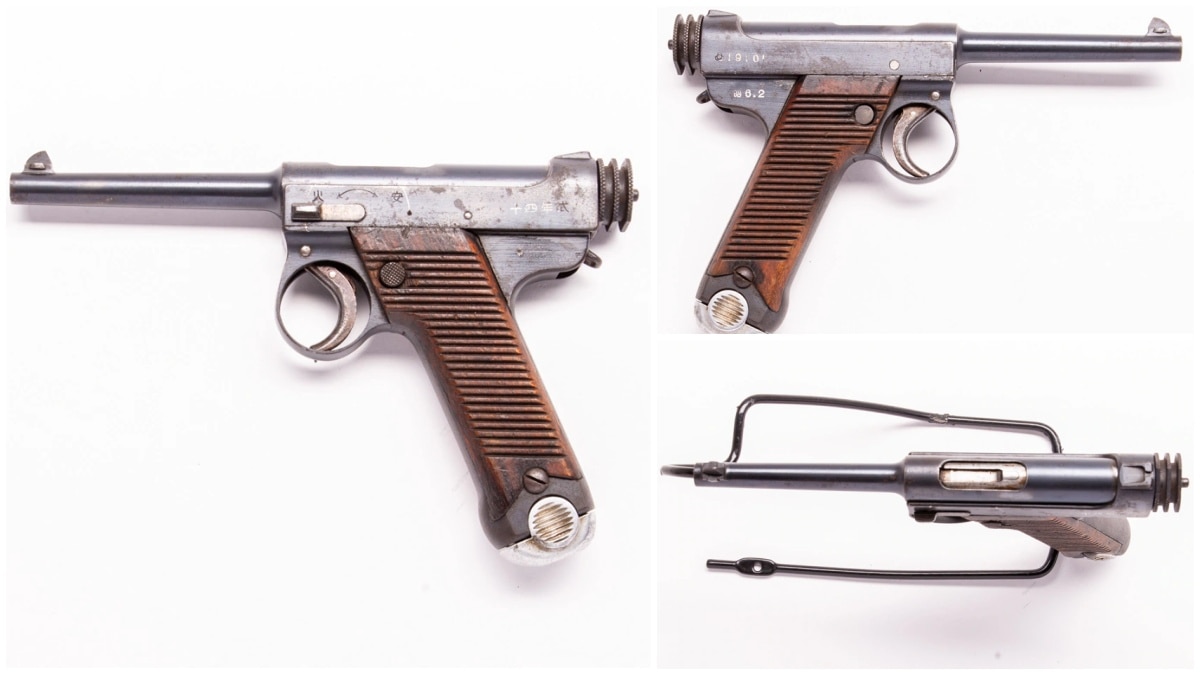
This early Kokura-made Nambu Type 14 has a 6.2 date mark on the frame is for the 2nd month of the 6th year of the reign of Emperor Showa (Hirohito) which ran from 1926 until 1989. This translates to February 1931– the first year of the Japanese invasion of Manchuria. Note the early-style cocking handle, small trigger guard and 25-line grips made of beech. (Photo: Richard Taylor/Guns.com)
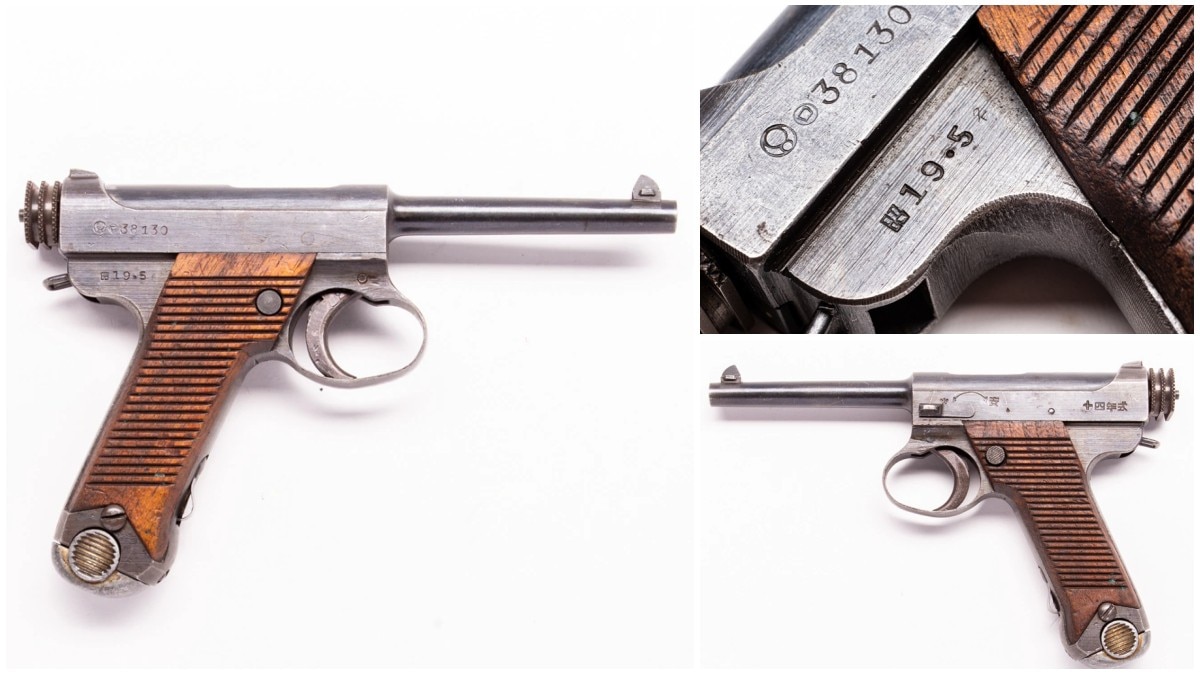
This Nagoya (Toriimatsu) Second Series pistol made Type 14 has a 19.5 Showa date mark which translates to May 1944 on a Western calendar. To put that in perspective, this gun was made the same month the Allies landed at Biak, Dutch New Guinea, a key Japanese airbase. Note the larger, oblong trigger guard, made for better use with gloves and later grips made of Philippine mahogany. (Photo: Richard Taylor/Guns.com)
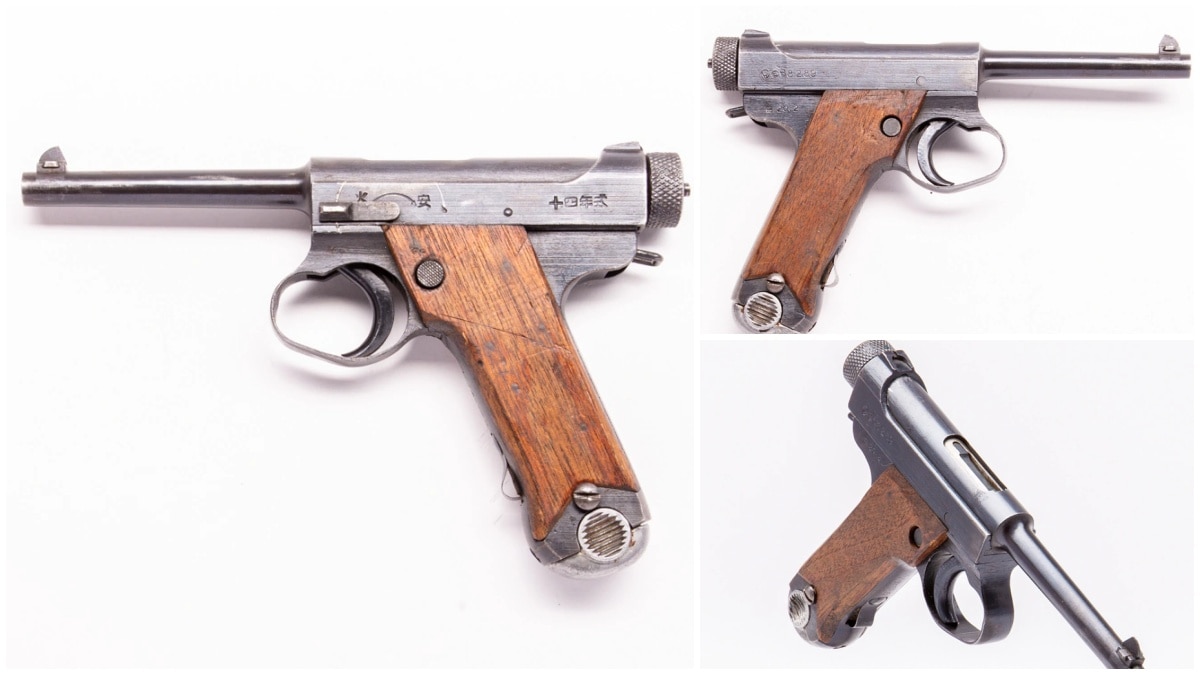
The 20.2 date mark on the frame of this Nagoya Type 14 translates to February 1945 on a Western calendar. To put that into historical perspective, this is the same month that the Japanese began their month-long fight to hold Manila in the Philippines. A very late war production Nambu, this gun comes from the company’s Toriimatsu factory who switched to ungrooved wooden grips in November 1944 to help speed up production as the Allies closed in on the Japanese Home Islands. These grips are referred to as “slab” grips by collectors. (Photo: Richard Taylor/Guns.com)
Post-War Travels
Although VJ Day was something of a death sentence for Japanese arms– many were destroyed or simply thrown in the ocean during the disarmament in late 1945– uncounted thousands of Nambus came back to the U.S. with GIs, Marines, and Sailors taking the “Magic Carpet Ride” back home.
A great souvenir that took up little space in a duffle bag, it made the ideal war trophy.
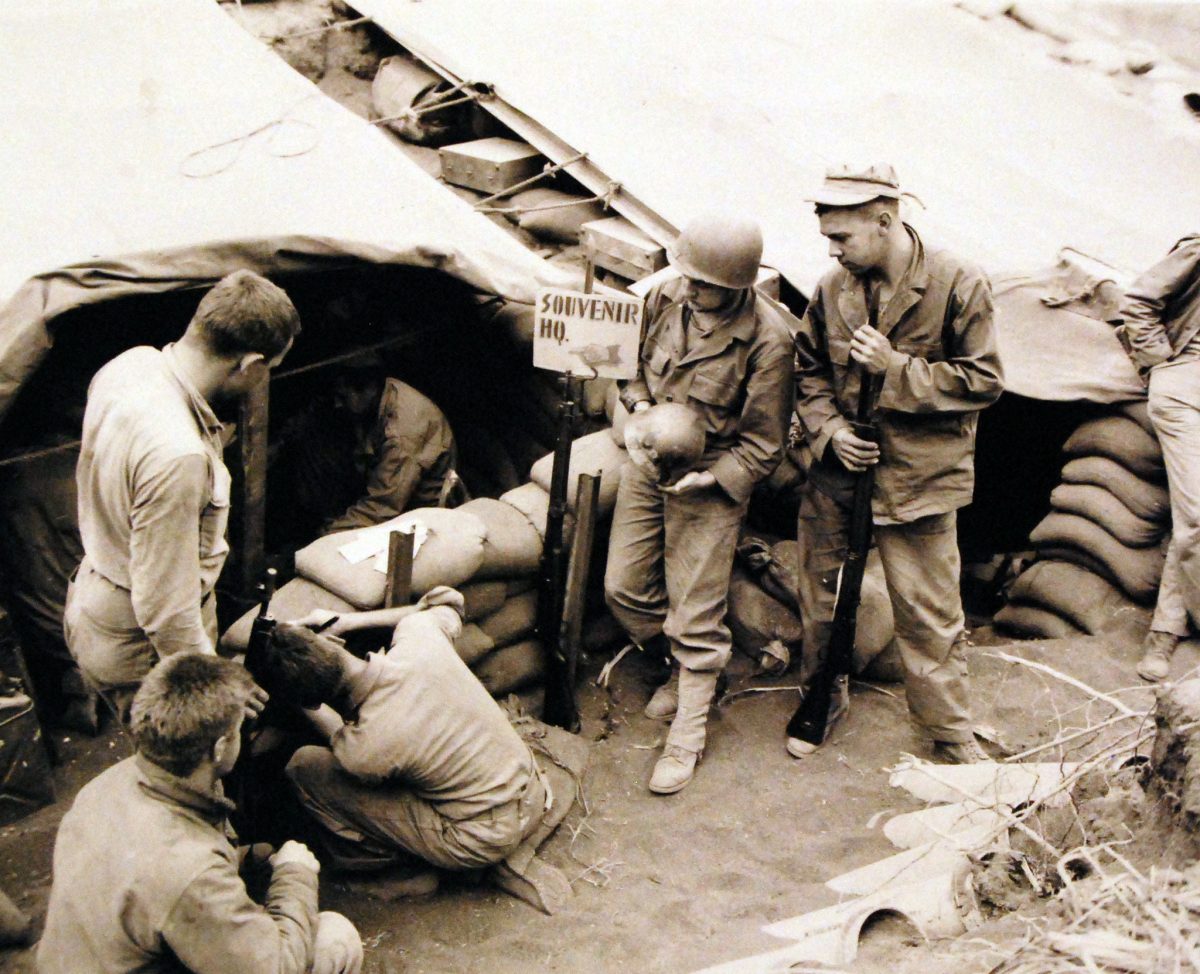
Marines just after the battle for Iwo Jima in March 1945 lining up at the D-2 Souvenir Headquarters to get paperwork to register their war trophies such as Japanese Arisaka rifles and Nambu pistols. (Photo: National Archives)

SGT George Chamberlain, Co.K 172nd Infantry Rgt, 43rd Inf Div. on New Georgia in 1943 with a captured Japanese battle flag– and a Type 14 Nambu pistol with its distinctive clamshell holster. (Photo: U.S. Army Center for Military History)

The Nambu proved a popular souvenir, not only with U.S. troops but also with Allies, such as these Australians. P.S. How about that Owen SMG? (Photo: Australian War Memorial)
One such war bring-back was used by Bill Ruger as something of an inspiration for the gun that ultimately became his Ruger Standard or Mark I .22LR pistol. You can see much the influence of the Nambu series in that very American plinker.
Estimates of Gunto and other “samurai” swords coming home as trophies out of Japan during the American occupation range as high as 3 million– which makes Nambu T14s actually much more rare.
The guns also proved popular in film and TV series, with dozens of war movies set during the Pacific campaigns having the Nambu as a guest star. Today, you can see the Type 14 regularly in the Amazon Prime show Man in the High Castle, used by the 1960s Japanese occupation forces in the fictionalized Japanese Pacific States.
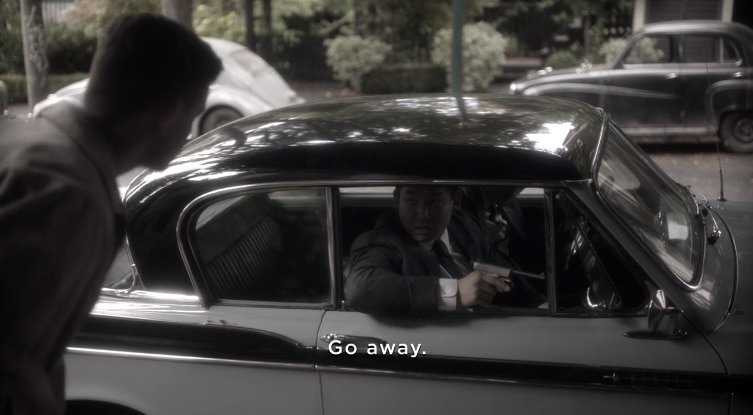
Screenshot: Man in High Castle
The Type 14 is also seen in a Galaxy Far, Far Away in Disney’s The Mandalorian, with Cara Dune’s (Gina Carano) blaster pistol based on the gun. It makes sense as the Star Wars franchise has long used classic firearms as the basis for sci-fi blasters (C96 Broomhandle ala Solo, anyone?).
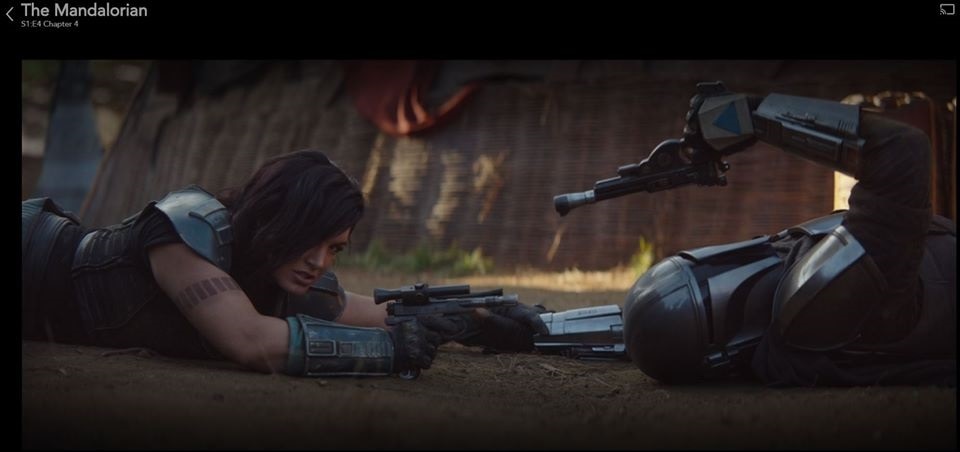
Cara and the Mandalorian draw their pistols after a brief scuffle in “Chapter 4: Sanctuary” (Photo: IMFDB)
As production ended in 1945 and no source of new parts exist, Nambus floating around in the U.S. are often in pretty poor condition. That, coupled with the fact that ammo is hard to find, has given these guns a reputation in recent years as being unreliable.
When compared to military surplus handguns like the Luger and P-38– which take readily available ammunition, were made in the millions and continued commercial production in addition to those made for wartime service– the Type 14 Nambu is generally not considered a “shooter” these days.
However, they are a solid collectible with rock-solid history to boot. And that never goes out of style.
If you like interesting and often rare guns like the Nambu T-14, be sure to check out our Collector’s Corner or look through our entire catalog of more than 3,000 new and used guns of all sorts.
The post Japanese Nambu Type 14 Pistol: Still Seen in the Most Curious Places appeared first on Guns.com.

